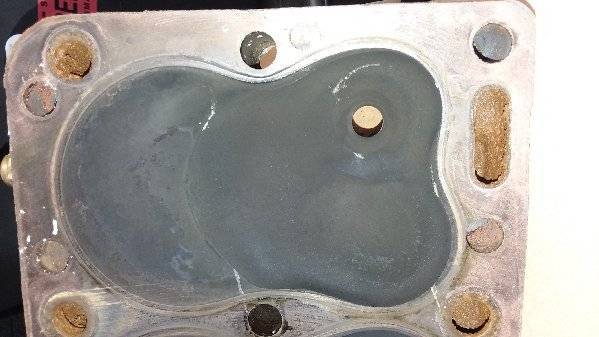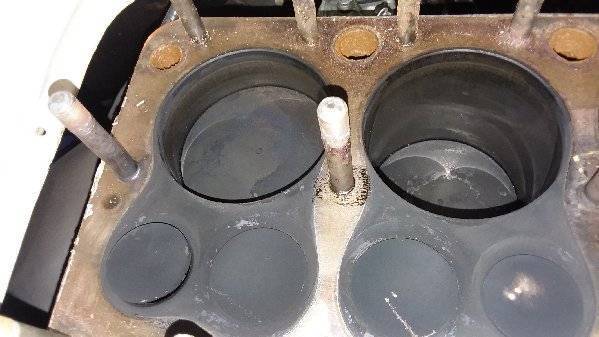tracking down ticking noise
Posted by Jim Kavanagh On 2019/5/8 2:16:27
Last year I replaced the hydraulic lifters in my '52 250 (there are a number of threads on that project in the forum). After just a short period of operation, I developed a ticking noise which sounded very much like a failed lifter. The car had to be fully at operating temperature to hear the noise (maybe run for 20 minutes or so), but it was very noticeable once it would start. Always runs and idles great, and is completely quite on start up until it gets fully hot.
I have been unable to really track it down. I pulled the valve covers and used a stethoscope on each valve stem and on each lifter - not easy because they are always turning. I could never head the noise at those locations. I could see no indication of failure of any lifter - no excess oil shooting out, and the lifters appeared to be operating, properly turning as they operated, etc. I pulled a couple of the rod bearing caps and plastigauged them. Tried individually pulling plug wires, etc. I do feel it is high up in the engine, not a rod or main.
I pulled the head off and will test the lifters. But, I did see something that may be the issue. On #8 cylinder, I note a small semi-circular mark around one side of the sparkplug. This indicates the exhaust valve has contacted the cylinder head. The mark is very shallow, appears to be just breaking the carbon on the head. I have attached a picture of the head and related # eight cylinder.
I am somewhat doubtful that this is the issue though, because when I originally did the work, I did not surface the head or reseat the valves, so it seems as though nothing should have changed and I did not have this noise before. Also, I have the lifter clearance tool J-4540, and I have .052 clearance between the tool and the valve stem on this valve. Requirement is .030 to .070. The exhaust valve on #1 Cylinder is the only one out of spec at .028, but there is no indication of contact, and the noise definitely was from the back half of the engine. All other valves were between .041 and 068. Regardless of the clearances, it does appear that the valve has stuck the head. It does not appear to be bent, and I have checked it with a dial indicator. If it is bent, that could cause it to fail to fully seat and increase the gap between the valve and the tool. I will have my machine shop double check it for me to be sure it is not bent.
Assuming it is not bent, I am trying to understand how the valve could hit the head given the measured gap at the valve stem. Maybe something with the hydraulic part of the lifter? The head gasket looked great and definitely was not damaged. The car idled smoothly and ran as good as ever.
Looking for any ideas to understand this a bit better.
Attach file:
 (108.92 KB)
(108.92 KB)

 (181.62 KB)
(181.62 KB)

 (170.45 KB)
(170.45 KB)

I have been unable to really track it down. I pulled the valve covers and used a stethoscope on each valve stem and on each lifter - not easy because they are always turning. I could never head the noise at those locations. I could see no indication of failure of any lifter - no excess oil shooting out, and the lifters appeared to be operating, properly turning as they operated, etc. I pulled a couple of the rod bearing caps and plastigauged them. Tried individually pulling plug wires, etc. I do feel it is high up in the engine, not a rod or main.
I pulled the head off and will test the lifters. But, I did see something that may be the issue. On #8 cylinder, I note a small semi-circular mark around one side of the sparkplug. This indicates the exhaust valve has contacted the cylinder head. The mark is very shallow, appears to be just breaking the carbon on the head. I have attached a picture of the head and related # eight cylinder.
I am somewhat doubtful that this is the issue though, because when I originally did the work, I did not surface the head or reseat the valves, so it seems as though nothing should have changed and I did not have this noise before. Also, I have the lifter clearance tool J-4540, and I have .052 clearance between the tool and the valve stem on this valve. Requirement is .030 to .070. The exhaust valve on #1 Cylinder is the only one out of spec at .028, but there is no indication of contact, and the noise definitely was from the back half of the engine. All other valves were between .041 and 068. Regardless of the clearances, it does appear that the valve has stuck the head. It does not appear to be bent, and I have checked it with a dial indicator. If it is bent, that could cause it to fail to fully seat and increase the gap between the valve and the tool. I will have my machine shop double check it for me to be sure it is not bent.
Assuming it is not bent, I am trying to understand how the valve could hit the head given the measured gap at the valve stem. Maybe something with the hydraulic part of the lifter? The head gasket looked great and definitely was not damaged. The car idled smoothly and ran as good as ever.
Looking for any ideas to understand this a bit better.
Attach file:
 (108.92 KB)
(108.92 KB)
 (181.62 KB)
(181.62 KB)
 (170.45 KB)
(170.45 KB)
This Post was from: https://packardinfo.com/xoops/html/modules/newbb/viewtopic.php?post_id=211533